Advanced Search: Build a Custom Dashboard
In the fields below, search for indicators by location, topics, population, classification, subgroup, or comparison. No fields are required, but we suggest selecting a location or two to start. In the additional search options section, select options to group and order search results. To learn more about how to customize a dashboard, see our help center.
Visit the Indicator List Page to see the full list of indicators and locations available on the site.
Search Results:
Indicator Gauge Icon Legend
Legend Colors
Red is bad, green is good, blue is not statistically different/neutral.
Compared to Distribution
 the value is in the best half of communities.
the value is in the best half of communities.
 the value is in the 2nd worst quarter of communities.
the value is in the 2nd worst quarter of communities.
 the value is in the worst quarter of communities.
the value is in the worst quarter of communities.
Compared to Target
 meets target;
meets target;  does not meet target.
does not meet target.
Compared to a Single Value
 lower than the comparison value;
lower than the comparison value;
 higher than the comparison value;
higher than the comparison value;
 not statistically different from comparison value.
not statistically different from comparison value.
Trend

 non-significant change over time;
non-significant change over time; 
 significant change over time;
significant change over time;  no change over time.
no change over time.
Compared to Prior Value
 higher than the previous measurement period;
higher than the previous measurement period;
 lower than the previous measurement period;
lower than the previous measurement period;
 no statistically different change from previous measurement period.
no statistically different change from previous measurement period.
Health / Tobacco Use
Health / Tobacco Use
County: Hawaii
County: Hawaii Teens Who Got E-Cigarettes from the Internet
County: Hawaii Teens Who Got E-Cigarettes from the Internet


County: Hawaii Teens Who Have Ever Tried a Cigarette
County: Hawaii Teens Who Have Ever Tried a Cigarette





County: Hawaii Teens Who Smoke Cigarettes
County: Hawaii Teens Who Smoke Cigarettes






County: Hawaii Teens Who Smoke Menthol Cigarettes
County: Hawaii Teens Who Smoke Menthol Cigarettes


County: Hawaii Teens Who Use E-Cigarettes
County: Hawaii Teens Who Use E-Cigarettes






County: Hawaii Teens Who Use E-Cigarettes Due to Flavors
County: Hawaii Teens Who Use E-Cigarettes Due to Flavors


County: Hawaii Young Teens Who Ever Tried E-Cigarettes
County: Hawaii Young Teens Who Ever Tried E-Cigarettes




County: Hawaii Young Teens Who Frequently Use E-Cigarettes
County: Hawaii Young Teens Who Frequently Use E-Cigarettes



County: Hawaii Young Teens Who Got E-Cigarettes from a Retailer
County: Hawaii Young Teens Who Got E-Cigarettes from a Retailer


County: Hawaii Young Teens Who Got E-Cigarettes from Social Source
County: Hawaii Young Teens Who Got E-Cigarettes from Social Source


County: Hawaii Young Teens Who Got E-Cigarettes from the Internet
County: Hawaii Young Teens Who Got E-Cigarettes from the Internet


County: Hawaii Young Teens Who Have Ever Tried a Cigarette
County: Hawaii Young Teens Who Have Ever Tried a Cigarette




County: Hawaii Young Teens Who Smoke Cigarettes
County: Hawaii Young Teens Who Smoke Cigarettes





County: Hawaii Young Teens Who Smoke Menthol Cigarettes
County: Hawaii Young Teens Who Smoke Menthol Cigarettes


County: Hawaii Young Teens Who Use E-Cigarettes
County: Hawaii Young Teens Who Use E-Cigarettes





Health / Weight Status
Health / Weight Status
County: Hawaii
County: Hawaii Adults Happy with Weight
County: Hawaii Adults Happy with Weight



County: Hawaii Adults Who Are Obese
County: Hawaii Adults Who Are Obese






County: Hawaii Adults who are Overweight
County: Hawaii Adults who are Overweight




County: Hawaii Adults with a Healthy Body Weight
County: Hawaii Adults with a Healthy Body Weight





County: Hawaii Doctor Advised About Weight Among Obese/Overweight
County: Hawaii Doctor Advised About Weight Among Obese/Overweight



County: Hawaii Teens who are Obese
County: Hawaii Teens who are Obese




County: Hawaii Teens who are Overweight
County: Hawaii Teens who are Overweight




County: Hawaii Teens with a Healthy Body Weight
County: Hawaii Teens with a Healthy Body Weight





Health / Wellness & Lifestyle
Health / Wellness & Lifestyle
County: Hawaii
County: Hawaii Adult Poor Physical Health: 14+ Days
County: Hawaii Adult Poor Physical Health: 14+ Days




County: Hawaii Adults who Agree Vaccine Benefits Outweigh Possible Risks
County: Hawaii Adults who Agree Vaccine Benefits Outweigh Possible Risks
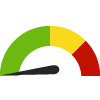



County: Hawaii Adults who Feel Life is Slipping Out of Control
County: Hawaii Adults who Feel Life is Slipping Out of Control



County: Hawaii Adults Who Formerly Smoked Cigarettes
County: Hawaii Adults Who Formerly Smoked Cigarettes





County: Hawaii Adults Who Get Insufficient Sleep
County: Hawaii Adults Who Get Insufficient Sleep




County: Hawaii Adults with Good Physical and Mental Health
County: Hawaii Adults with Good Physical and Mental Health




County: Hawaii Adults with Health Status of Good or Better
County: Hawaii Adults with Health Status of Good or Better





County: Hawaii Adults with Medical Conditions Limiting Lifestyle
County: Hawaii Adults with Medical Conditions Limiting Lifestyle



County: Hawaii Self-Reported General Health Assessment: Good or Better
County: Hawaii Self-Reported General Health Assessment: Good or Better
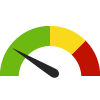





County: Hawaii Self-Reported General Health Assessment: Poor or Fair
County: Hawaii Self-Reported General Health Assessment: Poor or Fair
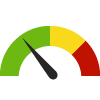

Health / Women's Health
Health / Women's Health
County: Hawaii
County: Hawaii Adults Who Visited an OB/GYN
County: Hawaii Adults Who Visited an OB/GYN




Community / Crime & Crime Prevention
Community / Crime & Crime Prevention
County: Hawaii
County: Hawaii Property Crime Perpetrated by Adolescents and Young Adults
County: Hawaii Property Crime Perpetrated by Adolescents and Young Adults



County: Hawaii Violent Crime Perpetrated by Adolescents and Young Adults
County: Hawaii Violent Crime Perpetrated by Adolescents and Young Adults



County: Hawaii Violent Crime Rate
County: Hawaii Violent Crime Rate



Community / Demographics
Community / Demographics
County: Hawaii
County: Hawaii Average Household Size
County: Hawaii Average Household Size



County: Hawaii Female Population
County: Hawaii Female Population




County: Hawaii Foreign Born Persons
County: Hawaii Foreign Born Persons



County: Hawaii Households
County: Hawaii Households

County: Hawaii Male Population
County: Hawaii Male Population




County: Hawaii Persons with Limited English Proficiency
County: Hawaii Persons with Limited English Proficiency






County: Hawaii Population American Indian and Alaska Native
County: Hawaii Population American Indian and Alaska Native




County: Hawaii Population Asian
County: Hawaii Population Asian




County: Hawaii Population Black or African American
County: Hawaii Population Black or African American




County: Hawaii Population Chinese
County: Hawaii Population Chinese



County: Hawaii Population Filipino
County: Hawaii Population Filipino



County: Hawaii Population Hispanic or Latino
County: Hawaii Population Hispanic or Latino




County: Hawaii Population Japanese
County: Hawaii Population Japanese



County: Hawaii Population Korean
County: Hawaii Population Korean



County: Hawaii Population Native Hawaiian and Other Pacific Islander
County: Hawaii Population Native Hawaiian and Other Pacific Islander




County: Hawaii Population Over Age 65
County: Hawaii Population Over Age 65




County: Hawaii Population Over Age 65 (Count)
County: Hawaii Population Over Age 65 (Count)

County: Hawaii Population Two or More Races
County: Hawaii Population Two or More Races




County: Hawaii Population Under Age 18
County: Hawaii Population Under Age 18




County: Hawaii Population Under Age 5
County: Hawaii Population Under Age 5




County: Hawaii Population White
County: Hawaii Population White




County: Hawaii Population White (Not Hispanic or Latino)
County: Hawaii Population White (Not Hispanic or Latino)




County: Hawaii Sexual Minority Adults
County: Hawaii Sexual Minority Adults



County: Hawaii Sexual or Gender Minority Adults
County: Hawaii Sexual or Gender Minority Adults



County: Hawaii Total Population
County: Hawaii Total Population


County: Hawaii Veteran Population
County: Hawaii Veteran Population



Community / Public Safety
Community / Public Safety
County: Hawaii
County: Hawaii Alcohol-Impaired Driving Deaths
County: Hawaii Alcohol-Impaired Driving Deaths





County: Hawaii Motor Vehicle Collision Death Rate
County: Hawaii Motor Vehicle Collision Death Rate





County: Hawaii Motor Vehicle-Related Hospitalization Rate
County: Hawaii Motor Vehicle-Related Hospitalization Rate


County: Hawaii Pedalcyclist Death Rate
County: Hawaii Pedalcyclist Death Rate


Community / Social Environment
Community / Social Environment
County: Hawaii
County: Hawaii Children in Single-Parent Households
County: Hawaii Children in Single-Parent Households




County: Hawaii Internet Usage
County: Hawaii Internet Usage




County: Hawaii Linguistic Isolation
County: Hawaii Linguistic Isolation
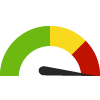



County: Hawaii People 65+ Living Alone (Count)
County: Hawaii People 65+ Living Alone (Count)

County: Hawaii Social Associations
County: Hawaii Social Associations
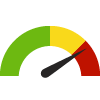




County: Hawaii Teens with an Adult They Can Talk To
County: Hawaii Teens with an Adult They Can Talk To




County: Hawaii Young Teens with an Adult They Can Talk To
County: Hawaii Young Teens with an Adult They Can Talk To




Community / Transportation
Community / Transportation
County: Hawaii
County: Hawaii Community Spending on Transportation
County: Hawaii Community Spending on Transportation



County: Hawaii Gasoline and Other Fuels Spending-to-Income Ratio
County: Hawaii Gasoline and Other Fuels Spending-to-Income Ratio
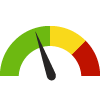


County: Hawaii Mean Travel Time to Work
County: Hawaii Mean Travel Time to Work
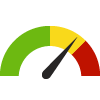



County: Hawaii Solo Drivers with a Long Commute
County: Hawaii Solo Drivers with a Long Commute





County: Hawaii Workers Commuting by Active Transportation
County: Hawaii Workers Commuting by Active Transportation




County: Hawaii Workers Commuting by Bicycling
County: Hawaii Workers Commuting by Bicycling




County: Hawaii Workers Commuting by Public Transportation
County: Hawaii Workers Commuting by Public Transportation






County: Hawaii Workers Commuting by Walking
County: Hawaii Workers Commuting by Walking
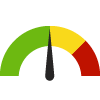




Economy / Employment
Economy / Employment
County: Hawaii
County: Hawaii Employer Establishments
County: Hawaii Employer Establishments


County: Hawaii Female Population 16+ in Civilian Labor Force
County: Hawaii Female Population 16+ in Civilian Labor Force




County: Hawaii Population 16+ in Civilian Labor Force
County: Hawaii Population 16+ in Civilian Labor Force




County: Hawaii Size of Labor Force
County: Hawaii Size of Labor Force


County: Hawaii Total Employment
County: Hawaii Total Employment


County: Hawaii Total Employment Change
County: Hawaii Total Employment Change





County: Hawaii Unemployed Workers in Civilian Labor Force
County: Hawaii Unemployed Workers in Civilian Labor Force





County: Hawaii Unemployed Workers in Civilian Labor Force: 25-64
County: Hawaii Unemployed Workers in Civilian Labor Force: 25-64



Economy / Food Insecurity
Economy / Food Insecurity
County: Hawaii
County: Hawaii Adults Who Receive Food Stamps or SNAP
County: Hawaii Adults Who Receive Food Stamps or SNAP




County: Hawaii Adults Who Receive Free Food
County: Hawaii Adults Who Receive Free Food




County: Hawaii Adults Who Report Food Scarcity
County: Hawaii Adults Who Report Food Scarcity



County: Hawaii Child Food Insecurity Rate
County: Hawaii Child Food Insecurity Rate





County: Hawaii Community Spending on Food
County: Hawaii Community Spending on Food



County: Hawaii Food Insecure Children Likely Ineligible for Assistance
County: Hawaii Food Insecure Children Likely Ineligible for Assistance





County: Hawaii Food Insecurity Rate
County: Hawaii Food Insecurity Rate





County: Hawaii Households Receiving SNAP
County: Hawaii Households Receiving SNAP



County: Hawaii Households Receiving SNAP with Children
County: Hawaii Households Receiving SNAP with Children



County: Hawaii Households Receiving SNAP with Children (Count)
County: Hawaii Households Receiving SNAP with Children (Count)

County: Hawaii Projected Child Food Insecurity Rate
County: Hawaii Projected Child Food Insecurity Rate



County: Hawaii Projected Food Insecurity Rate
County: Hawaii Projected Food Insecurity Rate



County: Hawaii Students Eligible for the Free Lunch Program
County: Hawaii Students Eligible for the Free Lunch Program





County: Hawaii Teens Who Went Hungry
County: Hawaii Teens Who Went Hungry




County: Hawaii Young Teens Who Went Hungry
County: Hawaii Young Teens Who Went Hungry




Economy / Government Assistance
Economy / Government Assistance
County: Hawaii
County: Hawaii Households with Cash Public Assistance Income
County: Hawaii Households with Cash Public Assistance Income




County: Hawaii Households with Children Receiving Assistance
County: Hawaii Households with Children Receiving Assistance



Economy / Housing & Homes
Economy / Housing & Homes
County: Hawaii
County: Hawaii Community Spending on Housing
County: Hawaii Community Spending on Housing



County: Hawaii High Housing Burden
County: Hawaii High Housing Burden



County: Hawaii Home Renter Spending-to-Income Ratio
County: Hawaii Home Renter Spending-to-Income Ratio



County: Hawaii Homelessness Rate
County: Hawaii Homelessness Rate



County: Hawaii Homeowner Spending-to-Income Ratio
County: Hawaii Homeowner Spending-to-Income Ratio



County: Hawaii Homeowner Vacancy Rate
County: Hawaii Homeowner Vacancy Rate




County: Hawaii Homeownership
County: Hawaii Homeownership




County: Hawaii Housing Units
County: Hawaii Housing Units


County: Hawaii Median Household Gross Rent
County: Hawaii Median Household Gross Rent



County: Hawaii Median Housing Unit Value
County: Hawaii Median Housing Unit Value



County: Hawaii Median Monthly Owner Costs for Households without a Mortgage
County: Hawaii Median Monthly Owner Costs for Households without a Mortgage



County: Hawaii Mortgaged Owners Median Monthly Household Costs
County: Hawaii Mortgaged Owners Median Monthly Household Costs









County: Hawaii Overcrowded Households
County: Hawaii Overcrowded Households



County: Hawaii Renters Spending 30% or More of Household Income on Rent
County: Hawaii Renters Spending 30% or More of Household Income on Rent





County: Hawaii Severe Housing Problems
County: Hawaii Severe Housing Problems





County: Hawaii Utilities Spending-to-Income Ratio
County: Hawaii Utilities Spending-to-Income Ratio



Economy / Income
Economy / Income
County: Hawaii
County: Hawaii Gender Pay Gap
County: Hawaii Gender Pay Gap










County: Hawaii Income Inequality
County: Hawaii Income Inequality




County: Hawaii Median Household Income
County: Hawaii Median Household Income




County: Hawaii Per Capita Income
County: Hawaii Per Capita Income




Economy / Investment & Personal Finance
Economy / Investment & Personal Finance
County: Hawaii
County: Hawaii Adults who Feel Overwhelmed by Financial Burdens
County: Hawaii Adults who Feel Overwhelmed by Financial Burdens







County: Hawaii Households with a 401k Plan
County: Hawaii Households with a 401k Plan



County: Hawaii Households with a Savings Account
County: Hawaii Households with a Savings Account




County: Hawaii Households with Student Loan Debt
County: Hawaii Households with Student Loan Debt



Economy / Poverty
Economy / Poverty
County: Hawaii
County: Hawaii Children Living Below 200% of Poverty Level
County: Hawaii Children Living Below 200% of Poverty Level





County: Hawaii Children Living Below Poverty Level
County: Hawaii Children Living Below Poverty Level




County: Hawaii Families Living Below 200% of Poverty Level
County: Hawaii Families Living Below 200% of Poverty Level





County: Hawaii Families Living Below Poverty Level
County: Hawaii Families Living Below Poverty Level




County: Hawaii Households Living Below Poverty Level
County: Hawaii Households Living Below Poverty Level



County: Hawaii People 65+ Living Below 200% of Poverty Level
County: Hawaii People 65+ Living Below 200% of Poverty Level





County: Hawaii People 65+ Living Below Poverty Level
County: Hawaii People 65+ Living Below Poverty Level




County: Hawaii People 65+ Living Below Poverty Level (Count)
County: Hawaii People 65+ Living Below Poverty Level (Count)

County: Hawaii People Living Below 200% of Poverty Level
County: Hawaii People Living Below 200% of Poverty Level





County: Hawaii People Living Below Poverty Level
County: Hawaii People Living Below Poverty Level





County: Hawaii Youth not in School or Working
County: Hawaii Youth not in School or Working




Education / Childcare & Early Childhood Education
Education / Childcare & Early Childhood Education
County: Hawaii
County: Hawaii Child Care Centers
County: Hawaii Child Care Centers



County: Hawaii Day Care Center and Preschool Spending-to-Income Ratio
County: Hawaii Day Care Center and Preschool Spending-to-Income Ratio



County: Hawaii Home Child Care Spending-to-Income Ratio
County: Hawaii Home Child Care Spending-to-Income Ratio




